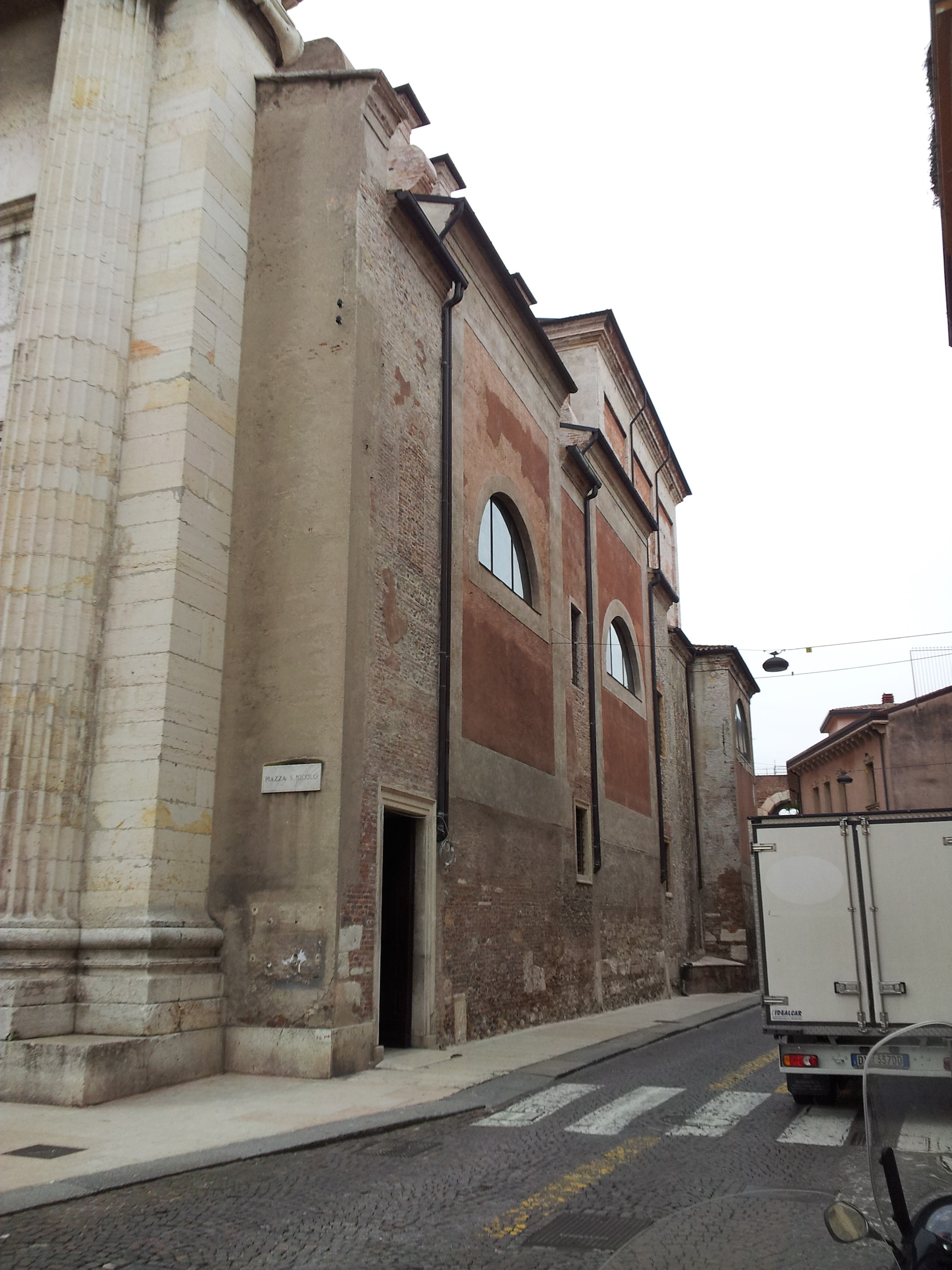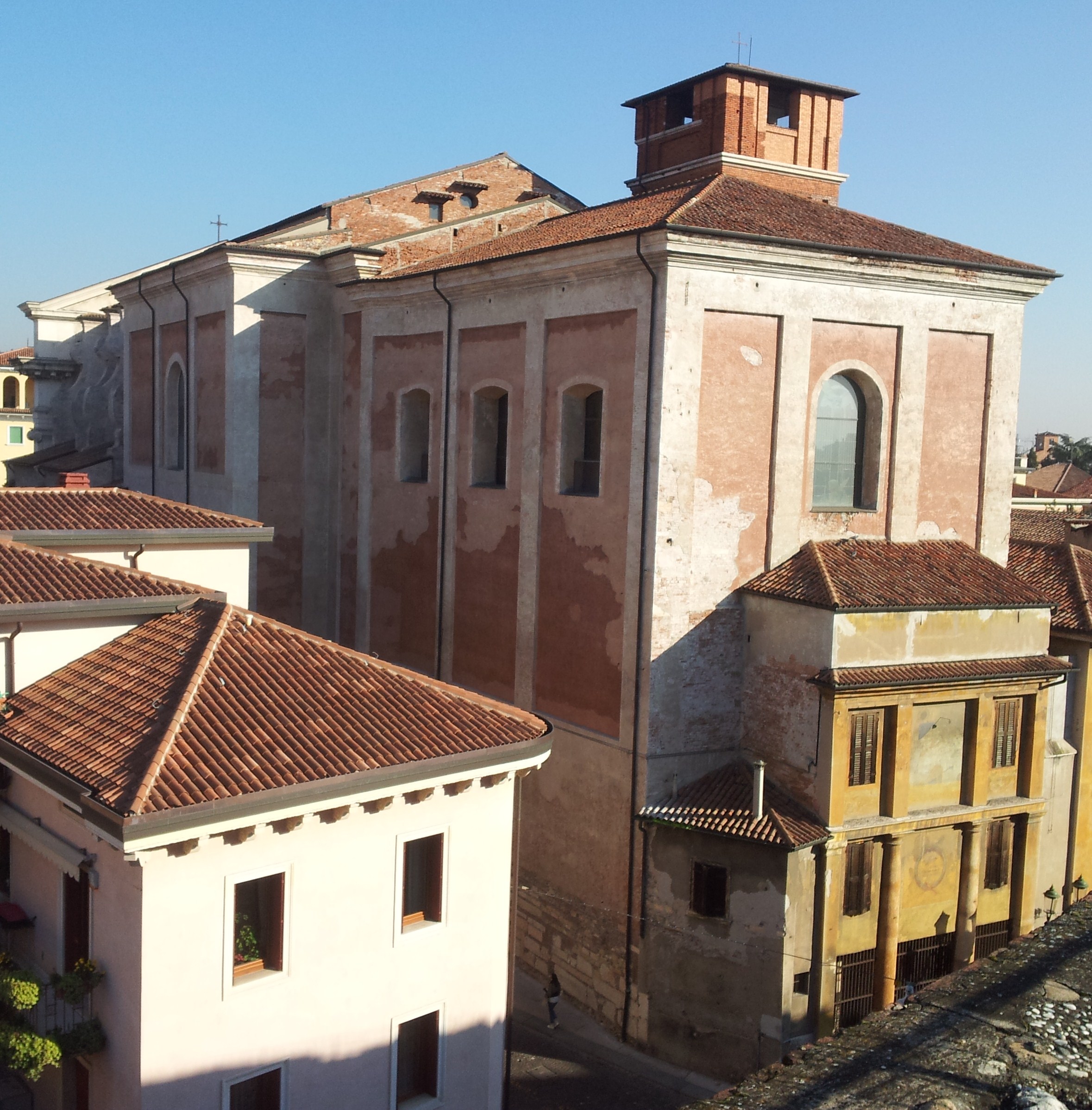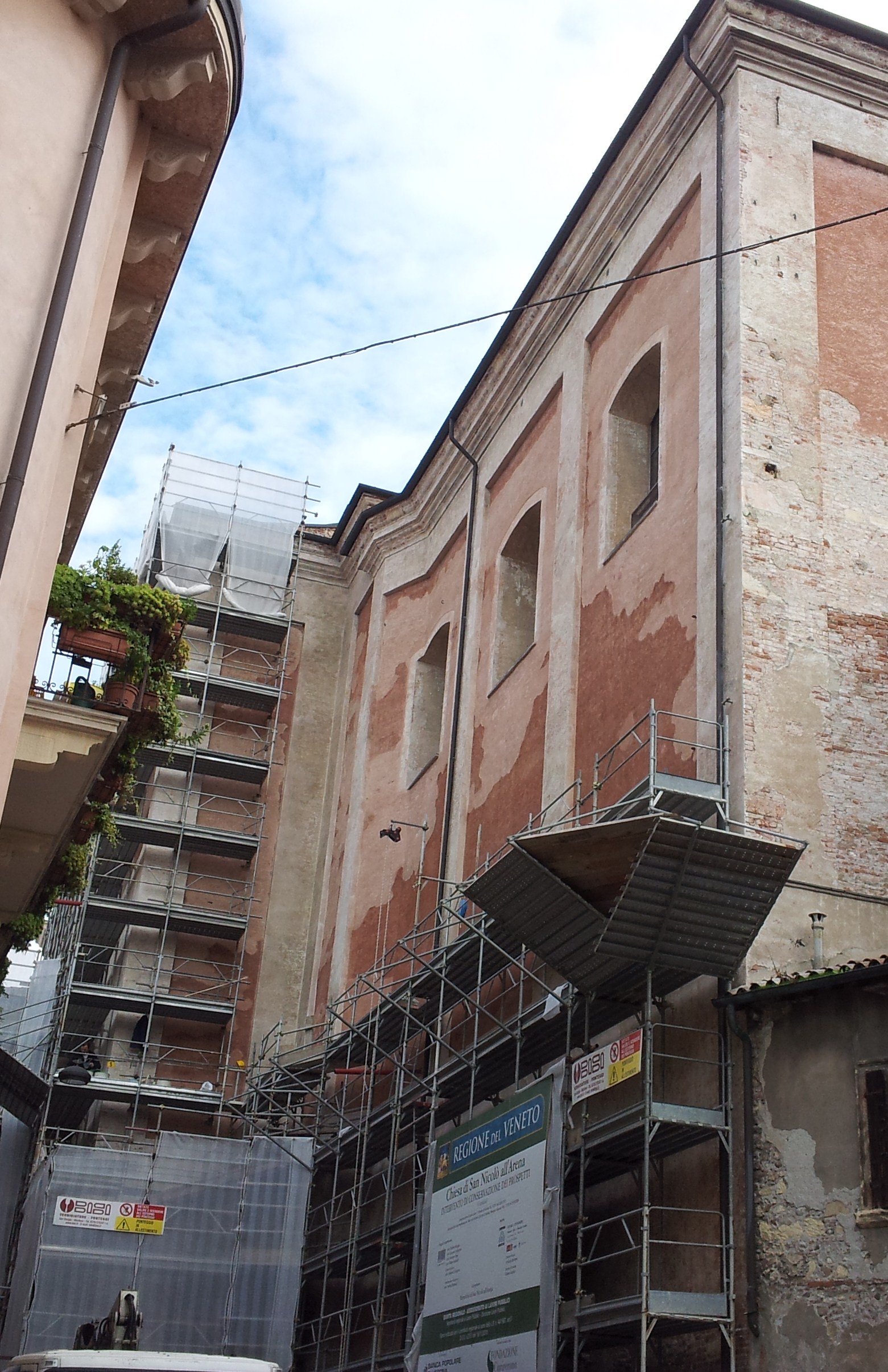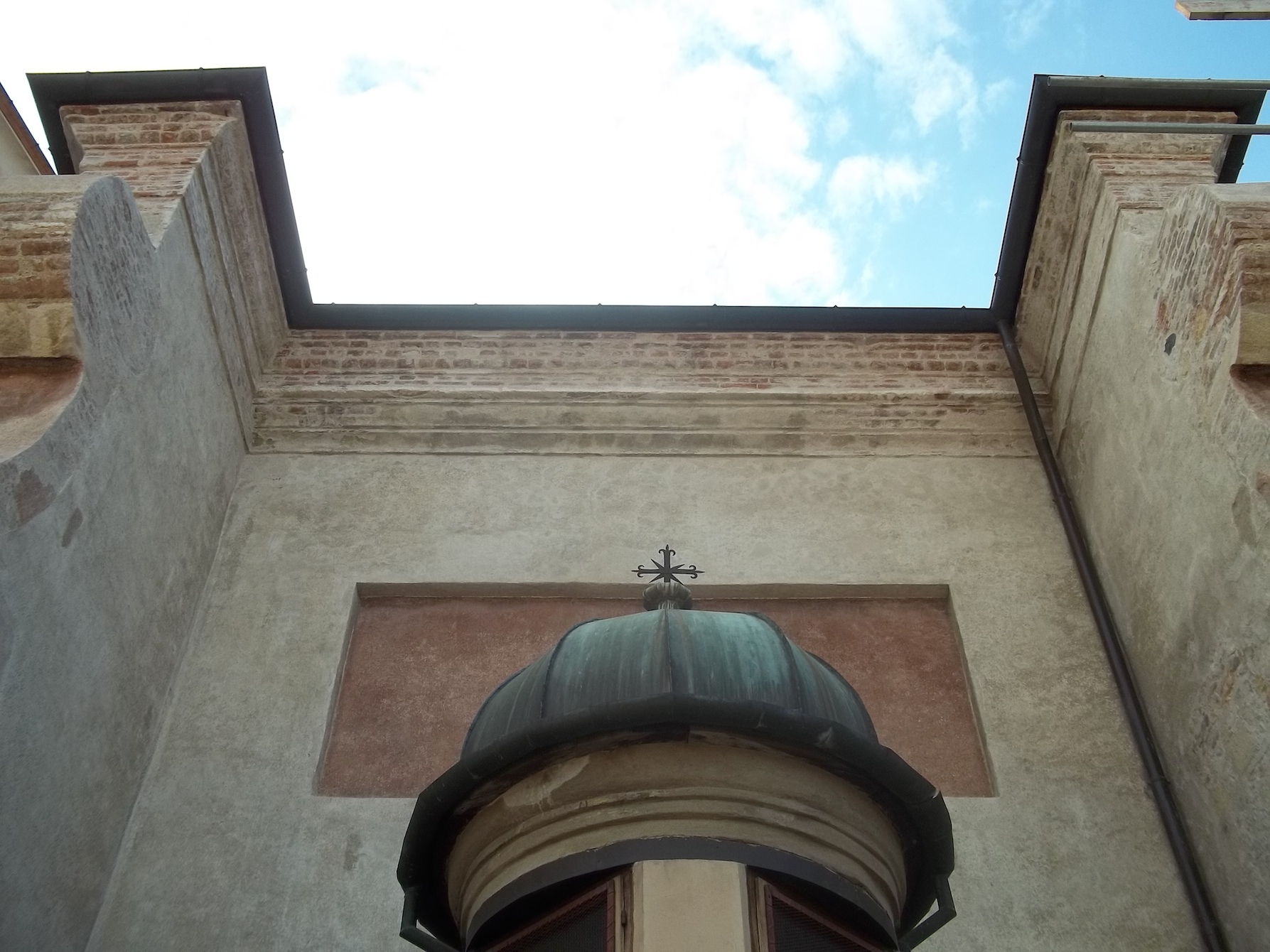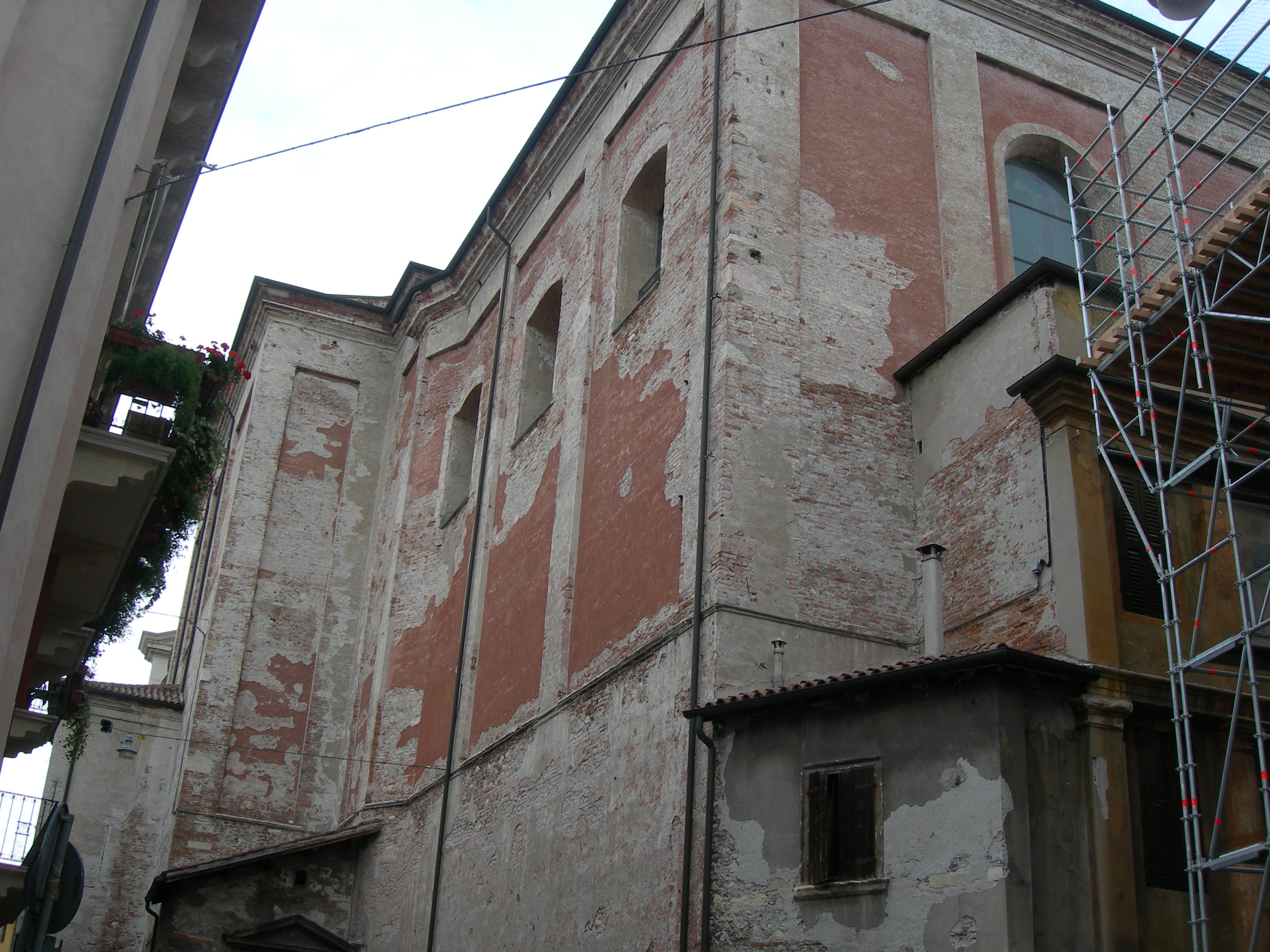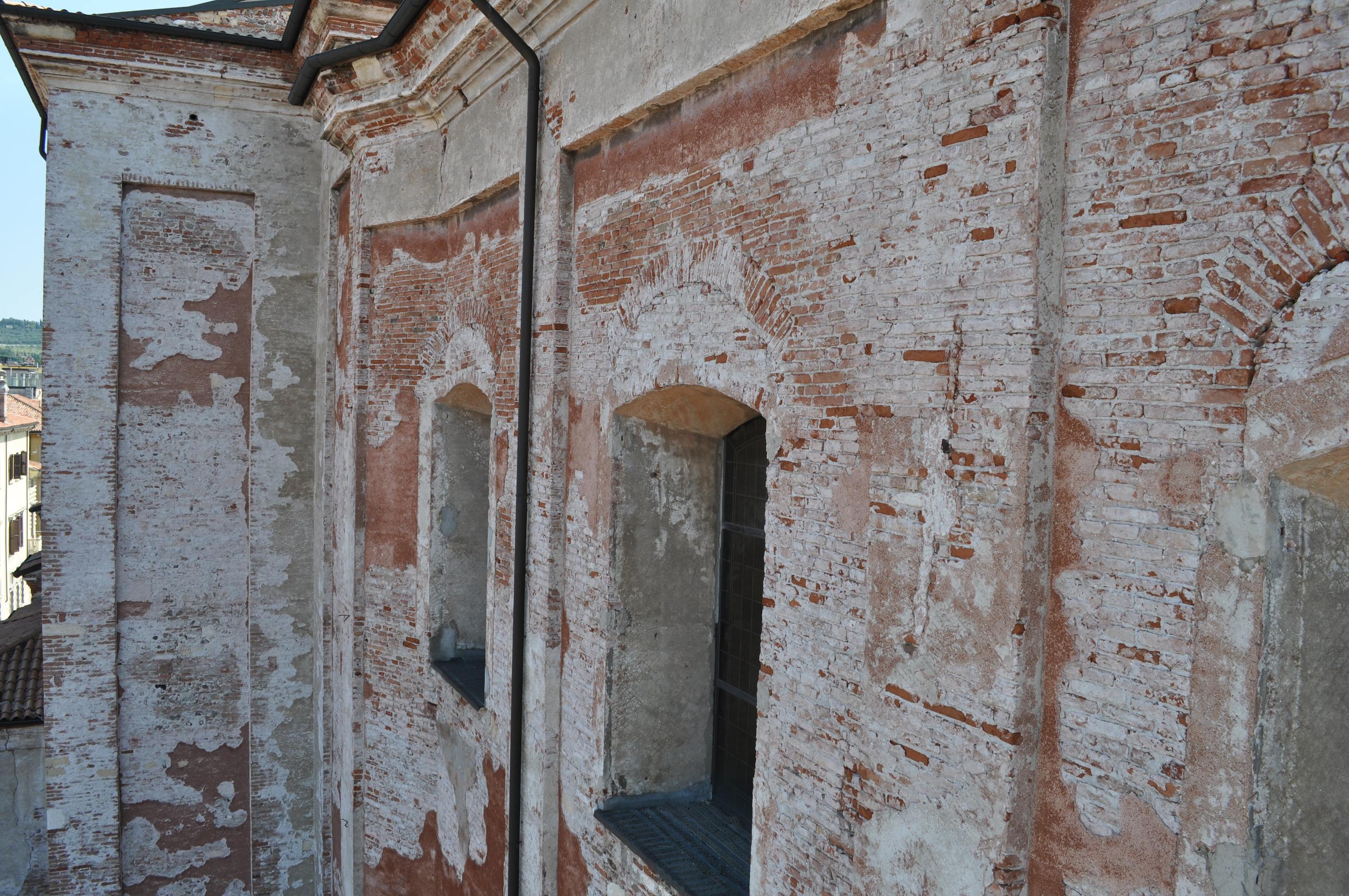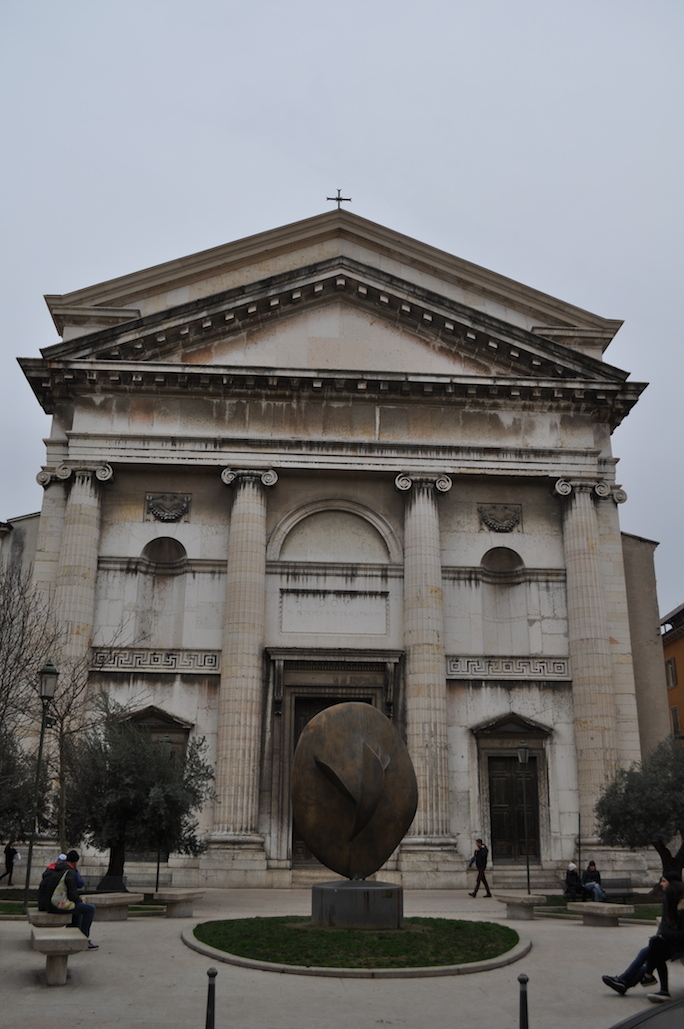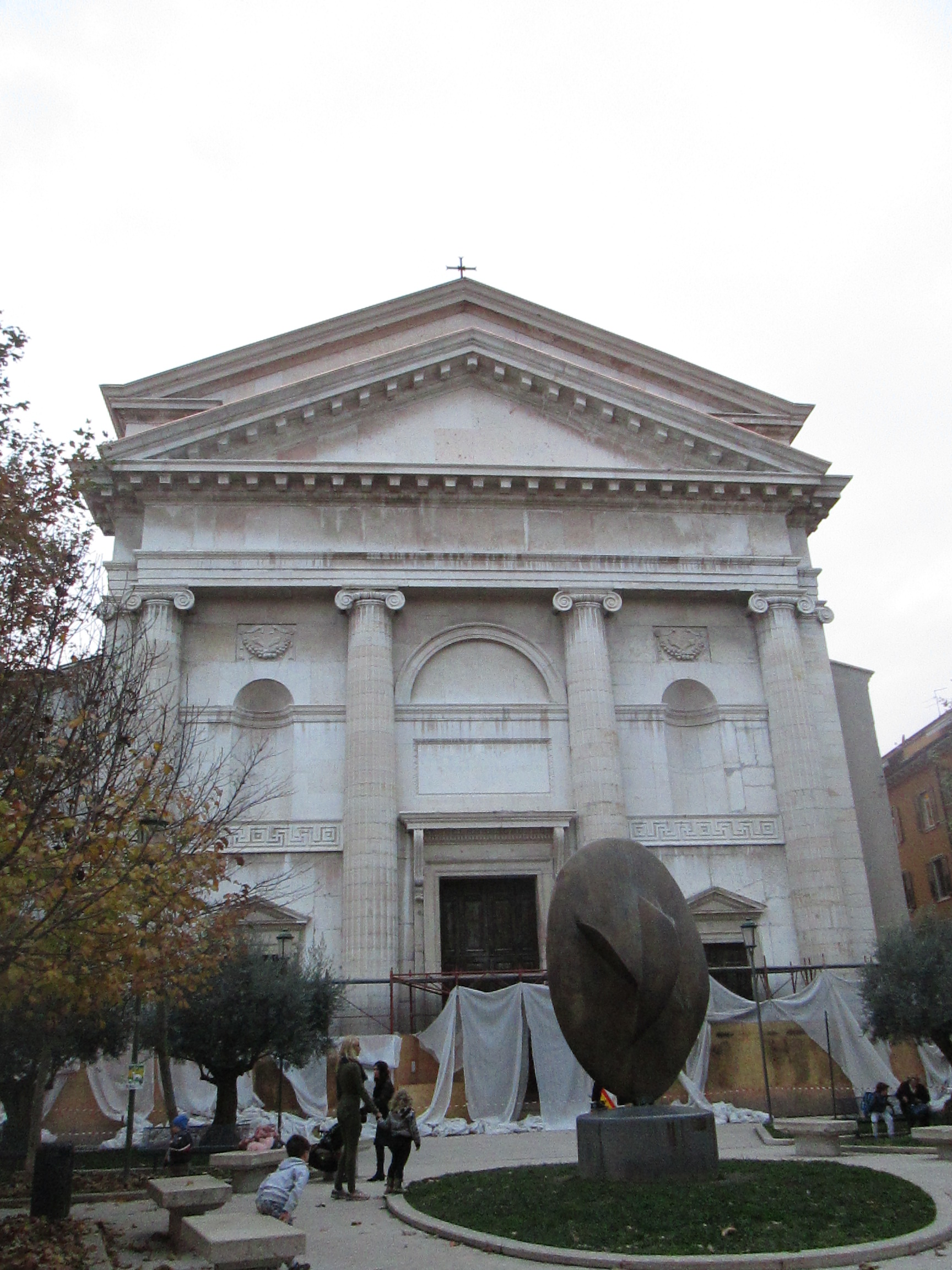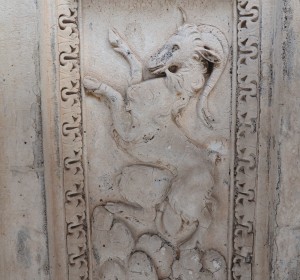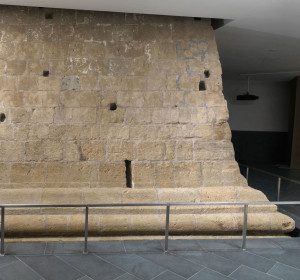Verona, San Nicolò all’Arena church
Date
Monday January 2nd, 2017
DATA SHEET
OBJECT
Verona, San Nicolò all’Arena church, fronts renovation
DATING:
XVII century
AUTHOR:
original project of the architect Lelio Pellesina (1602-1674), whose dome, facade and bell tower remained unfinished
POSITION:
Verona, San Nicolò square- Anfiteatro road
CUSTOMER:
San Nicolò all’Arena Parish Church
High surveillance of the Superintendence for Architectural Heritage and Landscape for the provinces of Verona, Rovigo, Vicenza – arch. Gaudini Gianna
Project and D.L .: arch.Giovanni Castiglioni, arch. Raffaela Braggio, arch.Genziana Fridge, arch. Philip Legnaghi (A.c.M.e.Studio, Verona)
RESTORATION WORK DATE:
Nord front 2012-2013
East front (facade) 2016
THE PROBLEM
THE PROBLEM
North Facade: characterized by the magnificent seventeenth century two-tone colored mortar paste (made by red earthenware for funds and white to highlight the decorative architectural scores) the northern facade urgently needed a plasters reinforcement intervention, plasters which were in an advanced detachment condition, or even fallen leaving exposed brickwork almost completely clay.
Eastern Facade: the facade, originally unfinished, has been completed in 1951, thanks to an extremely delicate operation which clearly was an experimental method implemented by Piero Gazzola, who was a dynamic and active Superintendent of Verona. Gazzola used the decorated structure of San Sebastiano’s facade – the church that was destroyed during World War II – making it disassemble and reassemble on the main facade of the church of St. Nicholas.
Among the load-bearing reasons for the intervention, there was the necessity to clearly identify the position of water leaks which were visible in the internal counter, in order to eliminate the causes and to create an adequate system for rainwater drainage.
THE METHOD
About the Northern facade, the purpose was to preserve all the informations that during the works arise from the reading of the building surfaces and, at the same time, give back the image of the architectural front, in particular from the chromatic standpoint, avoiding to falsify any interpretation.
Contextually, has been implemented a study on the wall’s fissures in order to avoid huge structural problematics and to achieve a monitoring system to check the building movements.
Following the reparation of every damages and the accurated reinforcement of the plasters’ cohesion, has been possible to have a clear global reading of the architectural decorative partition, thanks to the reparation of the tiny crevices with “tone on tone” mixture, or, in case of bigger fissures, if applicable, with a slightly lighter plasterwork close to the stone.
Mortars with inserts similar in nature and granules to the original ones have been realized, close-range distinguishable thanks to the addition of “anomalous” elements.
The operation on the northern front has also involved some important gravestone elements placed on the lower section (portal and ashlar block hailing from roman buildings or from the Arena).
About the eastern front, the restoration work has highlighted the seals’ inadequated grip between the covering ashlar blocks, the ones in red ammonic on the tympanum; this problem clearly arise since the facade restoration, evident considering the maladroit attempts to isolate the connections.
Considering the infiltration phenomena, some inspections have been implemented in order to verify the preservation of the iron elements used for the assembly of different ashlar blocks; these have revealed, in some cases, an advanced state of oxidation, and a damage for the whole structural endurance as a consequence.
Then, the restoration work keep going with an auxiliary structural reinforcing through an insertion at strategic points of some self-clinching threaded pins. Later, after having thoroughly cleaned and sealed connections between the segments of the gable roof, a copper coating of the slopes has been chosen, as a greater guarantee against infiltration.
The restoration intervention was an occasion for a maintenance of the surfaces, because of the scarcity of funds remained available, has been limited to the elimination of stone flakes flaking, a disinfestation from biological agents, a review of seals where missing or deteriorated, a cautious removal of further layers of black crusts and to a gentle cleaning with hot water spraying.
